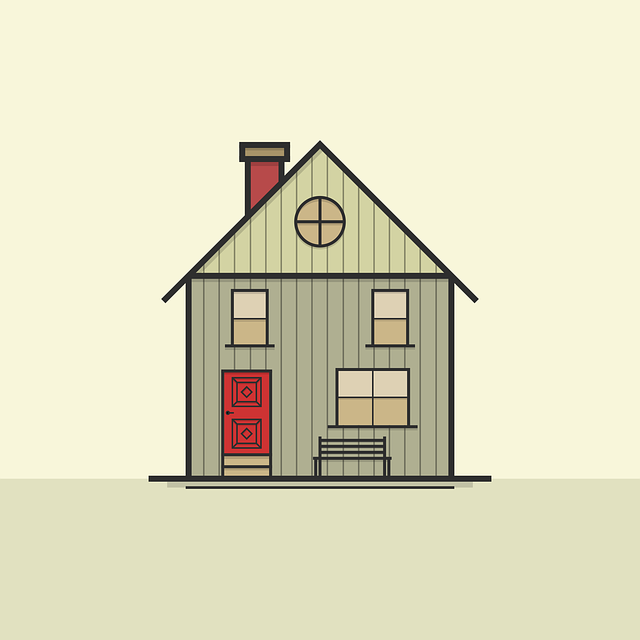Open-concept layouts and smart design are revolutionizing compact home living by eliminating walls to create fluid spaces. Multifunctional furniture and innovative storage like built-in shelves and under-bed drawers maximize every inch while promoting efficient organization. These small home space-saving tips, including decluttering and creative optimization, transform cramped areas into inviting retreats, visually expanding the floorplan and fostering a sense of calm.
Open Concept Layouts: Unlocking Flow in Small Spaces
Small homes don’t have to feel cramped. Embracing open-concept layouts can dramatically enhance space and create a sense of spaciousness. This article explores how open concepts work their magic on compact living, backed by practical tips for maximizing every inch. Discover innovative space-saving solutions like multifunctional furniture, vertical storage, and clever organization techniques that transform your small home into a haven of efficiency and comfort. Learn to declutter, optimize natural light, and implement organized routines for a calming and inviting atmosphere.
Understanding Open-Concept Layouts
Open-concept layouts have gained immense popularity in recent years, particularly among those who live in compact homes and seek space-saving tips to maximize their living areas. This design philosophy advocates for breaking down traditional barriers between rooms, creating a seamless flow that blurs the lines between living, dining, and cooking spaces. By embracing an open floor plan, small home owners can implement multifunctional furniture and creative storage solutions to optimize every inch of their compact homes.
This approach not only makes moving around the house more convenient but also promotes social interaction by encouraging gatherings in central areas. Moreover, it offers practical advantages such as improved light distribution and better ventilation, making smaller spaces feel brighter and more livable. When implementing open-concept layouts, decluttering becomes essential to avoid a cluttered appearance. Utilizing smart storage solutions and adopting effective small room organization techniques further enhance the benefits of this design concept, ensuring that every element in the compact home has its place and contributes to maximizing living space.
– Definition and benefits for small homes
Open-concept layouts are transforming the way we think about small home spaces, offering a breath of fresh air to those who often feel cramped by traditional designs. In the realm of compact home design, these layouts present a myriad of benefits tailored specifically to maximize small spaces. By eliminating walls, these open plans create a fluid and connected atmosphere, making each area feel larger and more inviting. This is especially beneficial for small room organization, allowing residents to adapt and utilize every inch efficiently.
For instance, multifunctional furniture is a cornerstone of successful compact home design. Pieces that serve dual or even triple purposes, such as a sofa that converts into a bed or a dining table with integrated storage, can significantly save space. Additionally, creative space optimization techniques, like incorporating built-in shelves, vertical storage units, and clever under-bed storage, contribute to a decluttered environment, making it easier to navigate and enjoy the space. These small home space-saving tips not only enhance aesthetics but also foster a sense of calm and comfort in what could otherwise feel confined.
– How open concepts create a sense of space
Open-concept layouts have revolutionized compact home design, offering a breath of fresh air for those living in cramped spaces. By eliminating traditional walls, these designs create a seamless flow between rooms, visually expanding the small area. This sense of openness is not merely aesthetic; it encourages movement and interaction throughout the home, making each space feel more expansive and inviting.
This approach to small room organization leverages multifunctional furniture and creative space optimization techniques to maximize every inch. For instance, a sofa with built-in storage can double as a bed for guests, while a kitchen island serves as both a meal preparation area and additional seating. Storage solutions for small homes, such as vertical shelving or under-bed drawers, play a crucial role in decluttering tips, ensuring every item has its place and contributes to a calm and organized environment.
Space-Saving Tips for Small Homes
In the realm of compact home design, maximizing small spaces is an art form. Space-saving tips for small homes include clever utilization of every inch available. Multifunctional furniture, such as a sofa that doubles as a bed or a dining table with integrated storage, can dramatically reduce the need for separate pieces, creating more living area and enhancing flow. Storage solutions for small homes are essential; consider vertical storage options like shelves or cabinets designed to fit against walls, under stairs, or even hanging from ceilings.
Small room organization is key to making a space feel open and inviting. Decluttering tips encourage letting go of unnecessary items, which can free up significant square footage. Creative space optimization involves thinking outside the box—for instance, using under-bed storage containers or installing folding desks in place of traditional ones. These small home layout ideas not only maximize space but also contribute to a more open and cohesive environment, making daily life more comfortable and efficient.
Open-concept layouts offer a compelling solution for maximizing small spaces and creating a sense of spaciousness in compact home designs. By integrating these design principles with strategic space-saving tips, such as multifunctional furniture and clever storage solutions, you can transform your small home into a functional and inviting living space. Remember, decluttering and organized small room organization are key to unlocking the full potential of any layout, ensuring every nook and cranny serves a purpose. With these ideas in mind, you’ll be well on your way to enhancing your home’s flow and enjoying a more comfortable, cohesive living environment.
